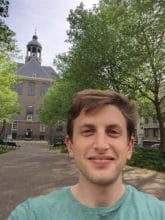 Hello, readers! Welcome to my blog. It’s great to have you here.
Hello, readers! Welcome to my blog. It’s great to have you here.
Seeing as this is my inaugural piece, I figure that an introduction is in order. I am a 28-year-old American, born and raised in the Washington D.C. area. Up until a few months ago, I worked as a researcher at the Brookings Institution, a nonprofit think tank, where I focused on urban economic development and a wide range of issues related to cities. Before that, I studied political science and history at Lafayette College, a small liberal arts school in Easton, Pennsylvania.
Beyond the resume, I’m a pretty curious guy, and I really love cities. What’s not to love? Urban areas are the engines of our global economy. They are the physical manifestations of the market’s interaction with government and society. They are ever-evolving monuments to our social and technological progress. They are the demographic melting pots of our society; our most intimate public venues for political and cultural expression, critical components of how we construct our identities…I could go on, but you get the idea.
How did I find myself in Amsterdam, writing this blog?
When I was 20 years old, I spent about five months here as a student at the Universiteit van Amsterdam (UvA). That semester was incredible—I made amazing friends, broadened my horizons immensely, and fell in love with Amsterdam. For years, I’d been itching to return, not just as a tourist for a few days, but in some kind of productive, longer-term capacity. After some long-distance networking, I was able to secure temporary positions with the Amsterdam Institute for Social Science Research at UvA and the Amsterdam Economic Board. I’ve now been here for about 3 weeks.
It was perhaps inevitable that my return to Amsterdam would put me in a reflective state of mind. In many ways, it felt like coming home after a long absence—a feeling that was magnified by the fact that my current apartment is literally across the street from where I was living as a student. Of course, the context around my being here has changed completely. Where I was once a carefree student, flannel-clad and in serious need of a haircut, now I am a working professional, donning professional attire and…well, probably still in need of a haircut. When in 2010 I arrived as a wide-eyed 20 year-old, still in the process of figuring out what I was interested in, now I carry with me several years of work experience and a relatively firm sense of professional and intellectual direction.
Thanks to several years of working on urban policy issues, the way that I find myself interacting with Amsterdam today feels very different than it did in 2010. When I was here as a student, I was not thinking about the functioning of the city in a particularly sophisticated way. Sure, I was blown away by the cultural vibrancy of the city, the effortless cosmopolitanism of the place, the cycling infrastructure, the canals, the gabled row houses, etc., but my comprehension of what was actually driving these things was very limited.
Now, I feel like I can understand what’s going on “under the hood.” Everywhere I look, I’m seeing political decisions, zoning laws, urban planning choices, infrastructure investments, neighborhood development efforts, creative uses of public space, and other forces shaping the contours of city life. While I’m just beginning to understand the specifics of local laws, regulations, and funding flows, I’m already feeling well-attuned to the general undercurrent of public strategies, private investments, and civic initiatives that have shaped (and continue to shape) the city. This greater sensitivity to my surroundings has made the experience of being here—and enjoying this beautiful, highly-functioning place—much more profound.
Going forward, this blog will largely serve as the place for me to articulate my observations on how things work here, and how city life in Amsterdam compares to my experiences back in the United States. I hope to cover a wide range of topics, including urban quality of life, neighborhood design, cycling (of course), diversity and gentrification, the role of creative industries in urban life, and many more.
Thanks again for reading, and hope to see you next week!
Ross Tilchin is a visiting fellow at the Amsterdam Institute for Social Science Research and a member of the strategy team at the Amsterdam Economic Board. Before arriving in Amsterdam, Ross worked as a researcher at the Brookings Institution, a nonprofit research organization in Washington, D.C., where he specialized in urban economic development and a wide range of issues related to cities.
